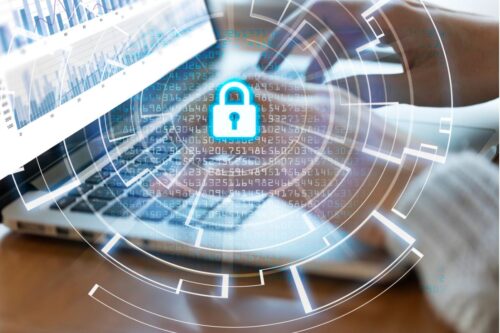Cybersecurity 101 Categories
How is device authentication done?
Device authentication is the process of verifying the identity of a device to ensure that only authorized devices are allowed to access certain resources or perform specific actions. The authentication process typically involves the following steps:
- Identification: The device sends an identification request to the authentication server. This request includes some form of unique identifier such as a MAC address or serial number.
- Authentication: The authentication server checks the identification request against a list of authorized devices or credentials. This is typically done by verifying a digital signature or certificate provided by the device.
- Authorization: If the device is successfully authenticated, the authentication server grants access to the requested resources or actions. This can be done by assigning the device a token or session ID that allows it to access the authorized resources.
There are several methods of device authentication, including:
- Password-based authentication: The device sends a username and password to the authentication server, which checks it against a database of authorized users.
- Certificate-based authentication: The device presents a digital certificate that contains its public key and a digital signature that is verified by the authentication server.
- Two-factor authentication: The device presents two forms of identification, such as a password and a one-time code sent to a mobile phone, to authenticate itself.
- Biometric authentication: The device uses biometric data, such as fingerprint or facial recognition, to authenticate itself.
Overall, device authentication is a crucial step in securing networks and ensuring that only authorized devices are granted access to sensitive resources.
What are the benefits of device authentication?
Device authentication has several benefits, including:
- Enhanced security: Device authentication helps to prevent unauthorized access to sensitive resources and data. It ensures that only authorized devices are allowed to connect to a network or access certain resources.
- Improved regulatory compliance: Many industries are subject to regulations that require the use of strong authentication methods. Device authentication can help organizations comply with these regulations and avoid penalties for non-compliance.
- Reduced risk of data breaches: Device authentication can help reduce the risk of data breaches by ensuring that only authorized devices are allowed to access sensitive data. This can help prevent data loss, theft, or tampering.
- Increased productivity: By ensuring that only authorized devices are allowed to connect to a network, device authentication can help reduce the risk of malware infections or other security incidents that can disrupt business operations.
- Better control over network access: Device authentication allows organizations to have better control over who can access their network and resources. This can help organizations manage network access more efficiently and reduce the risk of security incidents caused by unauthorized devices.
Overall, device authentication is an essential security measure that helps organizations protect their data and resources from unauthorized access and improve their overall security posture.
What’s the most secure method of device authentication?
The most secure method of device authentication depends on the specific use case and the level of security required. However, in general, multi-factor authentication (MFA) is considered to be the most secure method of device authentication.
MFA requires users or devices to provide at least two forms of identification to authenticate themselves. This can include a password or PIN, a physical token, a biometric factor, or a one-time code sent to a mobile phone or other device. By requiring multiple forms of identification, MFA makes it much more difficult for attackers to gain unauthorized access to resources or data.
In addition to MFA, other security measures can also enhance the security of device authentication, such as:
- Strong encryption: All communications between devices and authentication servers should be encrypted using strong encryption algorithms to prevent eavesdropping and other forms of interception.
- Secure protocols: Authentication protocols should be secure and resistant to attacks, such as brute force attacks, replay attacks, or man-in-the-middle attacks.
- Access controls: Access controls should be used to restrict access to sensitive resources and data to only authorized devices or users.
- Continuous monitoring: Continuous monitoring of devices and network activity can help detect suspicious activity and potential security incidents.
Overall, while MFA is considered the most secure method of device authentication, it should be used in conjunction with other security measures to ensure maximum protection against security threats.
Is there any way to spoof device authentication?
While it is possible to spoof device authentication, it is generally difficult to do so and requires advanced technical knowledge and resources. Spoofing involves pretending to be an authorized device to gain access to a network or resources.
One common method of spoofing device authentication is to steal or replicate the credentials of an authorized device, such as a username and password or a digital certificate. Attackers can then use these stolen credentials to impersonate the authorized device and gain access to the network or resources.
Other methods of spoofing device authentication can involve intercepting and manipulating network traffic or exploiting vulnerabilities in the authentication protocols or devices themselves.
To prevent spoofing attacks, it is essential to use strong authentication methods, such as multi-factor authentication, and to regularly monitor and update security protocols and devices. Additionally, access controls should be used to restrict access to sensitive resources and data to only authorized devices or users.
Overall, while it is possible to spoof device authentication, it is generally difficult to do so and can be prevented by implementing strong security measures and regularly monitoring and updating security protocols and devices.



